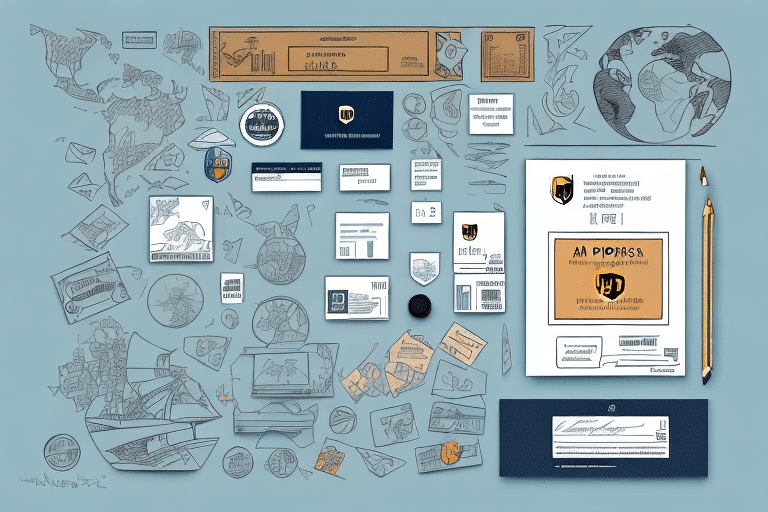How to Charge Customs Duties to Shippers in UPS WorldShip
UPS WorldShip is one of the most popular shipping and logistics platforms available in the market. It provides numerous features to help shippers manage their shipping needs, including the ability to charge customs duties to shippers. Customs duties are taxes levied on goods that cross international borders, and it's essential to accurately calculate and charge them to avoid any legal and logistical complications. In this article, we will discuss everything you need to know about charging customs duties to shippers in UPS WorldShip.
Understanding Customs Duties in International Shipping
Customs duties are taxes imposed on goods that are transported across international borders. The amount of duty varies based on several factors, including the destination country, the value of the goods, and the type of products being shipped. Understanding these duties is crucial for both compliance and cost management in international trade.
Factors Influencing Customs Duties
- Destination Country: Each country has its own tariff rates and regulations.
- Value of Goods: Higher-value items typically incur higher duties.
- Type of Goods: Different categories of products may have varying duty rates.
For detailed information on specific customs duties, refer to the official customs website of the destination country, such as the U.S. Customs and Border Protection for the United States or the HM Revenue & Customs for the United Kingdom.
Importance of Charging Customs Duties Correctly
Charging customs duties accurately is vital for several reasons:
- Regulatory Compliance: Ensures adherence to international trade laws and regulations.
- Financial Accuracy: Prevents unexpected costs that can affect profitability.
- Customer Satisfaction: Avoids delays and additional fees that can frustrate customers.
Failure to correctly charge customs duties can result in seized goods, additional fines, and damage to your business reputation.
Calculating Customs Duties in UPS WorldShip
UPS WorldShip simplifies the process of calculating customs duties through its integrated tools. Here’s how to effectively calculate customs duties using the platform:
Steps to Calculate Customs Duties
- Determine the Value of Goods: Use the FOB (Free on Board) value, which includes the cost of goods, insurance, and freight charges.
- Identify the Duty Rate: Obtain the applicable duty rate from the destination country's customs website or consult a customs broker.
- Enter Information into UPS WorldShip: Input the goods' value and duty rate into the system to automatically calculate the customs duties.
Additionally, consider other fees such as taxes, handling fees, and brokerage fees that may apply. Ensure all necessary documentation, including commercial invoices and certificates of origin, is accurately completed to facilitate smooth customs clearance.
Setting Up and Managing Customs Duties in UPS WorldShip
Configuring UPS WorldShip to handle customs duties correctly involves several steps:
Step-by-Step Setup Guide
- Access Preferences: Navigate to the 'Preferences' tab and select the 'Shipment' option.
- Enter Customs Information: Select 'Customs Information' and input details such as destination country, product description, and goods' value.
- Update Duty Rates: Enter the current customs duty rates for the destination country. Regularly update these rates to reflect any changes.
- Save Settings: Once all information is entered, click 'Save' to apply the settings for future shipments.
UPS WorldShip also allows users to set up customs duty exemptions for specific products or destinations by selecting the 'Exemptions' option under 'Customs Information'. This feature is beneficial for businesses that frequently ship exempted items.
Best Practices for Managing Customs Duties
Effectively managing customs duties requires attention to detail and adherence to best practices:
- Accurate Data Entry: Ensure that all product descriptions and values are accurately entered into UPS WorldShip.
- Regular Rate Verification: Continuously verify and update customs duty rates to stay compliant with the latest regulations.
- Comprehensive Documentation: Maintain thorough records of all customs-related documents, including invoices and packing lists.
- Consult Experts: When in doubt, consult with a customs broker or agent to ensure accurate duty calculations and compliance.
Using the correct tariff classification for products, based on the Harmonized System (HS) code, is also crucial as it directly affects the duty rate applied. Additionally, familiarize yourself with any specific regulatory requirements of the destination country, such as labeling or packaging standards.
Avoiding Common Mistakes When Charging Customs Duties
Many shippers encounter challenges when managing customs duties. Here are common mistakes to avoid:
- Incorrect Product Descriptions: Mislabeling products can lead to incorrect duty calculations and potential legal issues.
- Outdated Duty Rates: Using old duty rates can result in undercharging or overcharging, affecting both compliance and profitability.
- Incomplete Documentation: Missing or incorrect paperwork can cause shipment delays and additional fees.
- Improper Classification: Failing to use the correct HS code can lead to incorrect duty assessments.
To mitigate these risks, implement thorough verification processes and regularly train staff on the latest customs regulations and procedures.
Handling Disputes and Staying Compliant
Despite best efforts, disputes over customs duties may arise. Here’s how to handle them effectively:
Dispute Resolution Steps
- Contact Authorities: Reach out to the relevant customs authorities or a certified customs broker to address and resolve disputes.
- Review Documentation: Ensure all paperwork is accurate and complete to support your case.
- Utilize UPS Support: UPS WorldShip offers dispute resolution options; consult with a UPS representative for assistance.
Maintaining Compliance
- Stay Informed: Keep up-to-date with international trade laws and customs regulations.
- Regular Audits: Conduct periodic audits of your customs duty processes to ensure ongoing compliance.
- Partner with Experts: Collaborate with reputable customs brokers or agents to navigate complex regulatory landscapes.
Staying compliant not only avoids legal complications but also ensures smoother shipping operations and maintains your business’s integrity in international markets.
Benefits of Using UPS WorldShip for Customs Duty Management
UPS WorldShip offers several advantages for managing customs duties efficiently:
- Automated Calculations: Automatically calculates and charges the correct customs duties based on entered data.
- User-Friendly Interface: Simplifies the setup and management of customs duty information and rates.
- Real-Time Tracking: Provides up-to-date tracking and monitoring of shipment statuses.
- Compliance Resources: Access to a wealth of customs compliance information and resources to aid in accurate duty management.
Additionally, UPS WorldShip streamlines the customs clearance process by enabling electronic submission of documentation, reducing errors and processing times. Its customizable reporting tools allow businesses to analyze customs duty expenses, identify cost-saving opportunities, and make informed decisions for future shipments.
For more information on UPS WorldShip's features, visit the UPS WorldShip Features Page.
Staying Compliant with International Trade Laws
Maintaining compliance with international trade laws when charging customs duties is essential to avoid legal and logistical issues. Follow these guidelines to ensure compliance:
- Accurate Declarations: Verify that all customs declaration forms are filled out correctly and completely.
- Correct Duty Calculations: Ensure that all customs duties are calculated and charged accurately based on the latest rates.
- Regulation Updates: Stay informed about changes in international trade regulations and customs policies.
- Professional Assistance: Partner with reputable customs brokers or agents when necessary to navigate complex regulations.
By adhering to these practices, shippers can maintain compliance, minimize risks, and ensure a seamless international shipping experience.






















